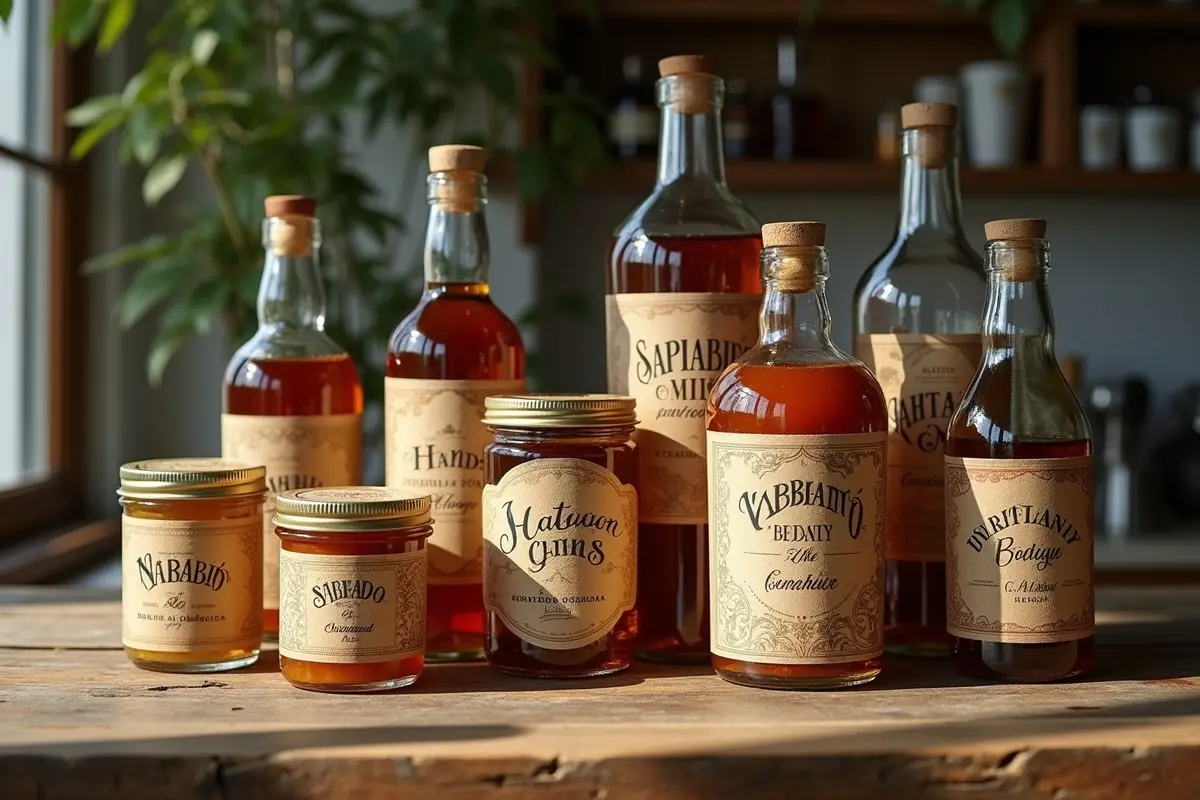In today’s crowded marketplace, the way you present your bottles and jars can be just as important as the quality of the product they contain. A thoughtfully designed label grabs attention, tells your brand’s story, and sets your offerings apart from competitors on the shelf. Whether you’re customizing homemade jams, launching a small business, or simply gifting friends, creative product labels are a crucial element in making your goods stand out and memorable.
Modern consumers expect a great deal from packaging. Not only should your label be appealing, but it should also reflect the values and personality of your brand. From sleek minimalism to interactive elements, inspiration can be drawn from design trends or personal touches that resonate with your audience. The right label transforms a simple bottle or jar into something truly special, sparking curiosity and inviting closer inspection.
Innovative labeling doesn’t have to be complicated—sometimes a subtle tweak or an addition of a handcrafted detail is all it takes. This article guides you through various approaches, ensuring you find the perfect fit for your product, audience, and message. With custom labels, you hold the power to create an emotional connection and boost brand loyalty with every use.
Minimalist Designs
Minimalism remains a timeless favorite for producers and brands seeking a high-end, sophisticated aesthetic. Clean lines, limited color palettes, and straightforward typography are hallmarks of minimalist design. This style is especially effective where shelf competition is fierce and clarity takes precedence.
A well-executed minimalist label allows your product and key messaging to shine, removing distractions and enhancing shelf presence. Minimalist packaging trends are showing remarkable growth, with many brands finding that ‘less is more’ not only visually, but in terms of consumer trust and recall.
Vintage-Inspired Labels
There’s a distinct charm and sense of nostalgia that comes with vintage-inspired labels. Drawing from classic design elements such as serif fonts, aged paper backgrounds, and retro color schemes, these labels instantly create an emotional connection.
Touches like faux postal stamps, weathered patterns, or antique flourishes can evoke the past and suggest quality, tradition, and craftsmanship—key drivers for both artisanal and established brands. This approach works exceptionally well for products like jams, syrups, or spirits where a story-rich heritage can increase perceived value and trustworthiness.
Interactive Labels
Today’s consumers appreciate packaging that offers more than just a visually appealing appearance. Interactive labels—such as those featuring temperature-sensitive inks, peel-off recipe cards, or QR codes leading to exclusive web content—add experiential value. These interactive elements generate curiosity and encourage users to pick up and interact with the product.
A cleverly placed QR code can guide potential customers directly to tutorials, behind-the-scenes videos, or loyalty discounts, extending the experience well beyond the initial purchase.
Eco-Friendly Materials
Environmental responsibility is a significant concern for many buyers. Utilizing recycled or biodegradable papers, compostable adhesives, and inks derived from vegetables or water-based not only reduces your environmental impact but also signals to consumers that you care about more than just the bottom line.
Integrating natural textures, earthy tones, and recycled content can reinforce your green credentials and attract an audience that prioritizes sustainability. This approach also positions your brand in alignment with global movements toward more responsible production.
Handwritten and Hand-Drawn Styles
Personal touches via handwritten fonts or whimsical, hand-drawn graphics foster a sense of intimacy and authenticity. For small-batch producers, cottage industries, or DIY gift-makers, these styles tell a story of craftsmanship, love, and attention to detail.
Hand-drawn illustrations—from botanical sketches to playful doodles—can convey uniqueness, and handwritten names or notes can make each item feel tailored just for the recipient. This trend resonates especially well for culinary and wellness products seeking to project artisanal credibility.
Transparent Labels
Crystal-clear labels are a popular choice for products where what’s inside deserves to be the star. With a “barely there” aesthetic, transparent labels offer a sleek, premium appearance. For food and beverage producers, providing consumers with a clear view of the product’s color and quality often increases trust. Add subtle metallic touches or playful accents for a modern twist. Some creative brands include secret messages that only become visible as the jar empties, transforming an everyday object into a delightful discovery.
Seasonal Themes
Leveraging holidays, changing seasons, or special occasions is a smart way to keep your products feeling fresh and relevant. Swapping out label artwork for Valentine’s Day, Halloween, or summer picnics makes it easy to encourage repeat purchases and gift-giving. Limited-edition seasonal labels also inspire a sense of urgency, as buyers seek to collect or gift items with a time-sensitive flair. This approach enables your brand to remain dynamic and engaging throughout the year.
Dual-Purpose Labels
Labels combining style and function enhance the customer experience. Measurement guides on jars or writable panels turn packaging into practical tools, while removable labels enable repurposing, appealing to eco-conscious and creative customers. Thoughtfully designed labels boost product appeal, connect with target markets, and reinforce brand values. A good label is more than just branding; it’s a silent ambassador that shares your story with customers.
Final Thoughts
Modern label design goes far beyond aesthetics—it’s about storytelling, functionality, and forging emotional connections with consumers. Whether through minimalist elegance, nostalgic charm, or eco-conscious innovation, each design approach serves as a reflection of brand identity and consumer values.
In an era where first impressions happen in seconds, adequate labeling can determine whether a product stands out or fades into the background. By blending creativity with strategy, brands can craft packaging that not only attracts attention but also builds lasting trust and loyalty.




